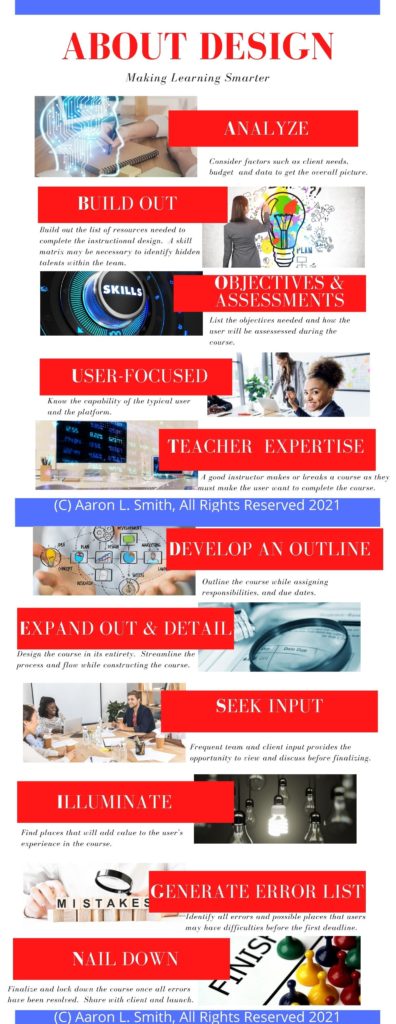
For several months I’ve scoured the web to learn as much as I could about how the academic world prepares for learning and instructional designers create courses and training for corporations.
Burrowing through these rabbit holes, many similarities and discrepancies became apparent where it made me reflect on why we must make learning smarter.
Taking notes like an honors student in an AP course, patterns emerged.
Whether or not instructional designers, Subject Matter Experts, or instructors teach in an asynchronous or live format, the model I am sharing will work everywhere.
Today’s blog will introduce the model to you, and over the next several weeks, we will unpack the model so you will get a comprehensive picture.
The Evolution of Instructional Designers

Over the past century, many breakthroughs in learning have taken place. From Gagne to Bloom’s Taxonomy, research has provided us with vital and critical aspects of how we learn. However, when research combines with technology, the formation of some amazing instructional design takes place.
Learning is “ABOUT DESIGN” and becomes optimized when we focus on all the components.
To give you a better understanding, let’s break it down.
Analyze – consider client needs, budget, and data to conceptualize the whole picture.
Buildout – build out the list of resources needed to complete the instructional design. A skill matrix may be necessary to identify hidden talents and to know what may need to be outsourced.
Objectives & assessments – List the objectives needed and how the user will be assessed during the course.
User-focused – Know the capability of the typical user and the platform.
Teacher expertise – A good instructor makes or breaks a course as they must make the user want to complete the course.
Develop an outline – Outline the course while assigning responsibilities and due dates.
Expand out & detail – Design the course in its entirety. Streamline the process and flow while constructing the course.
Seek input – Frequent team and client input allows viewing and discussing before finalizing.
Illuminate – Find places that will add value to the user’s experience in the course.
Generate an error list – Identify all errors and possible places where users may have difficulties before the first deadline.
Nail down – Finalize and lock down the course once all errors have been resolved. Share with the client. Launch and reflect on how to improve for the next course.
Good instructional design has continuous refinement even after the course launches. If the team fails to recognize this, the user misses out on the experience.
Instructional Designers Download the model here!
Get Your ABOUT DESIGN Model Here for free!
Do you agree with the model? What else would you recommend? Can you guess what will be in what section of the model?
Comment below or contact us for more information if we can help you design your next course.



